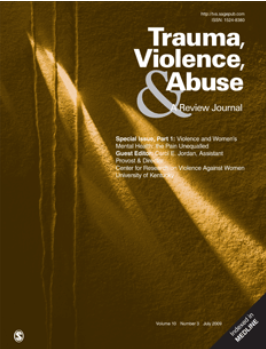Cyberstalking Perpetrators and Their Methods: A Systematic Literature Review
IF 5.4
1区 社会学
Q1 CRIMINOLOGY & PENOLOGY
引用次数: 0
Abstract
The existing body of research on cyberstalking has identified the prevalent nature of this behavior, and the detrimental impact that cyberstalking has on victims and society. This systematic review aims to summarize literature on the perpetration of cyberstalking with two research questions: (a) Who are the perpetrators of cyberstalking? and (b) What are the methods of cyberstalking? Two literature databases (SCOPUS and Web of Science) were searched for empirical research or literature reviews examining cyberstalking perpetration and/or methods. Following screening, 80 articles were identified and rated as highly relevant based on their applicability to the research questions. Perpetrators of cyberstalking were found to lack social skills, have low self-control, have experienced physical abuse victimization, endorsed stalking-related attitudes, and have higher rates of Internet use. Perpetrators were motivated by trying to reconcile a relationship, exact revenge, seek a relationship, or establish control over the victim. The most commonly reported methods of cyberstalking were unwanted and repeated online contact through email, social media, or text message. Other methods of cyberstalking include accessing the victim’s accounts, tracking their GPS location, posing as the victim online, or contacting friends/family of the victim. The findings of this review highlight precursors to, and patterns of, cyberstalking perpetration, and future research is required to explore how existing “offline” stalking risk assessments and typologies can be applied to cases of cyberstalking, which would allow authorities to develop effective case management strategies.网络跟踪犯罪者及其方法:系统文献综述
关于网络跟踪的现有研究表明了这种行为的普遍性,以及网络跟踪对受害者和社会造成的有害影响。本系统性综述旨在总结有关网络跟踪行为的文献,并提出两个研究问题:(a) 谁是网络跟踪的实施者? (b) 网络跟踪的方法有哪些?我们在两个文献数据库(SCOPUS 和 Web of Science)中搜索了有关网络跟踪行为和/或方法的实证研究或文献综述。经过筛选,确定了 80 篇文章,并根据其对研究问题的适用性评定为高度相关。研究发现,网络跟踪的施害者缺乏社交技能、自控能力差、有身体虐待受害经历、认可跟踪相关的态度,而且使用互联网的比例较高。犯罪者的动机是试图调和关系、实施报复、寻求关系或建立对受害者的控制。据报告,最常见的网络跟踪方法是通过电子邮件、社交媒体或短信进行不受欢迎的反复在线联系。其他网络跟踪方法包括访问受害者的账户、跟踪其 GPS 位置、在网上冒充受害者或联系受害者的朋友/家人。本次审查的结果突出了网络跟踪犯罪的前兆和模式,今后需要开展研究,探讨如何将现有的 "离线 "跟踪风险评估和类型学应用于网络跟踪案件,从而使有关当局能够制定有效的案件管理策略。
本文章由计算机程序翻译,如有差异,请以英文原文为准。
求助全文
约1分钟内获得全文
求助全文
来源期刊

Trauma Violence & Abuse
Multiple-
CiteScore
13.60
自引率
7.80%
发文量
131
期刊介绍:
Trauma, Violence, & Abuse is devoted to organizing, synthesizing, and expanding knowledge on all force of trauma, abuse, and violence. This peer-reviewed journal is practitioner oriented and will publish only reviews of research, conceptual or theoretical articles, and law review articles. Trauma, Violence, & Abuse is dedicated to professionals and advanced students in clinical training who work with any form of trauma, abuse, and violence. It is intended to compile knowledge that clearly affects practice, policy, and research.
 求助内容:
求助内容: 应助结果提醒方式:
应助结果提醒方式:


